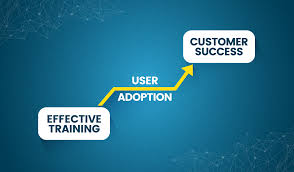The Effect of Customer Training in New Product Release: Empirical Evidence in The Banking Industry in Ghana

Abstract:
The study
sought to investigate whether customer training in new product release will have
an effect on customer loyalty. In this paper, we identify a wide-spread problem
that confronts most bank customers through interviews and interactions with regards
to using newly released products of the banks in Ghana. We sampled sixteen banks
out of the thirty banks in Ghana using simple stratification and used simple random
sampling to select 278 customers from the selected banks. Also, we interviewed 45
bank managers out of a target population of ninety (90). The models used were Pearson
correlation coefficient to determine the strength of relationship between variables
and linear regression to predict the effect of training customers in new product
release on customer loyalty. The results show that customer training in new product
enhances product usage, improves customer satisfaction, and impact positively on
customer loyalty. We also suggest a training model and product satisfaction model
to maximize the patronage of the new product.
Keywords: New product release, training, effect, customers,
customer loyalty.
References:
[1].
Amo,
T. (2017). The negative effect of lack of training in the workplace. Retrieved from:http://smallbusiness.chron.com/negative-effects-lack-training-workplace-45171.html.
[2].
Alicia Barroso, (2007). Advertising
and Consumer Awareness of a New Product. Job Market Paper, November 2007.
Retrieved from:
http://ftp.zew.de/pub/zew-docs/veranstaltungen/rnic/papers/AliciaBarroso.pdf.
[3].
Bastos,
J.A.R., and Gallego, P.M. (2008). Pharmacies Customer Satisfaction and Loyalty:
A Framework Analysis. Journal of Marketing. Universal de Salamanca
[4].
Chai,
K.H., Ding, Y., and Xing, Y. (2009). Quality and Customer Satisfaction Spillovers
in the Mobile Phone Industry Service. Science: (2), pp. 93-106.
[5].
Crosby,
P. (1979). Quality is Free. New York: McGraw-Hill.
ISBN 0-07-014512-1.
[6].
Chavan,
R.B. (2003). “Manual on Quality Assurance for Khadi”. Mahatma Gandhi Institute
of Rural Industrialization, a collaborative project of KVIC & IITD.
[7].
Dut, V.V. (2015). The Effects of Local Business Environments on
SMEs’ Performance: Empirical Evidence from the Mekong Delta. Asian Academy of Management
Journal. Vol.20.N0. 1. 101-122. 2015.
[8].
Filip,
A. and Angel D.L. (2009). Customer Loyalty and its determinants in a Banking Services
Environment. The Bucharest Academy of Economic Studies, Romania. Vol XI. Nr.26.
June 2009.
[9].
Iberahim
H.; Mohd Taufik, N.K.; Mohd Adzmir.; and Saharuddin, H. (2016). Customer Satisfaction
on Reliability and Responsiveness of Self -Service Technology for Retail Banking
Services. Procedia Economics and Finance 37:13-20 · December 2016 DOI: 10.1016/S2212-5671(16)30086-7.
[10].
Kotler,
P. (1991). Marketing Management: Analysis, Planning, Implementation, and Control.
Prentice-Hall, Inc. Englewood Cliffs, N.J. 07632. 7th edition, pp. 173-178.
[11].
Lagrosen,
S. (2005). Customer Involvement in New Product Development: A Relationship
Marketing Perspective. DOI: 10.1108/14601060510627803. Retrieved from: https://www.researchgate.net/publication/235321071_Customer_involvement_in_new_product_development._A_relationship_marketing_perspective.
[12].
Nassazi,
(2013). Effects of Training on Employee Performance: Evidence from Uganda. Business
Economics and Tourism. Retrieved from:
https://publications.theseus.fi/bitstream/handle/10024/67401/THESIS.pdf?sequence=1.
[13].
Oliver,
R.L. (1997). Satisfaction: A Behavioural Perspective on the Consumer. New York:
McGraw-Hill.
[14].
Rana,
H., Aur, K., and Hammed, M. S. (2014). Determinants of Customer Loyalty: Evidence
from the Egyptian Mobile Market. International Journal of Customer Relationship
Marketing and Management.
[15].
Woojung,
C. and Steven, A.T. (2016). The Effectiveness of Customer Participation in New Product
Development: Ameta-Analysis. Journal of Marketing, 80 (1), 47-64. https://www.talentlms.com/elearning/product-training.
[16].
Shaw,
J. (2017). “Effects of Training on Employee Performance” Retrieved from: smallbusiness.chrron.com/effects-training-employee-performance-39737.html.
[17].
Wells,
D. (2014). Retrieved from: http://www.inc.com/donna-wells/when-it-comes-tocustomers-train-to-retrain.html.
[18].
Yi,
Y. (1990). A critical Review of Consumer Satisfaction in Zeithaml. V. (Ed), Review
of Marketing, 1990, American Marketing Association, Chicago, IL, pp. 68-123.
[19].
Yarimoglu,
E. (2011). Customer Service Effects on Customer Satisfaction and Customer Loyalty:
A Field Research in Shopping Centers in Izmir City - Turkey. International Journal
of Business and Social Science. 2.

